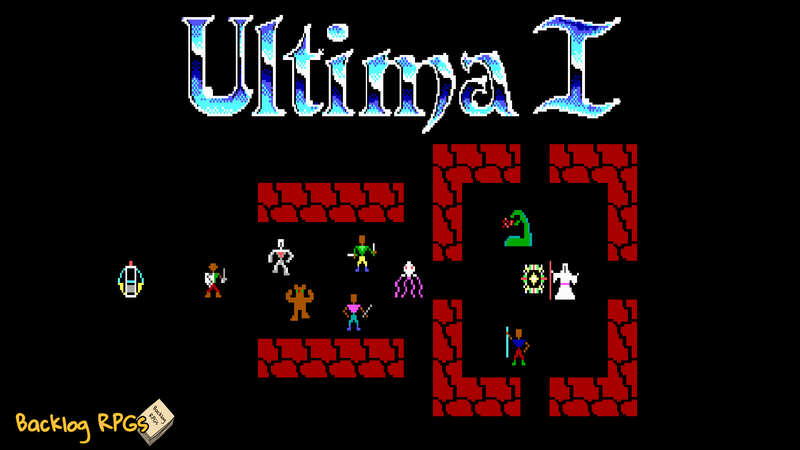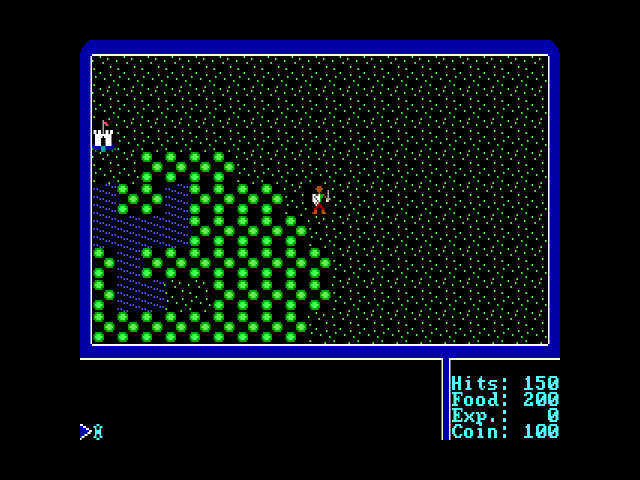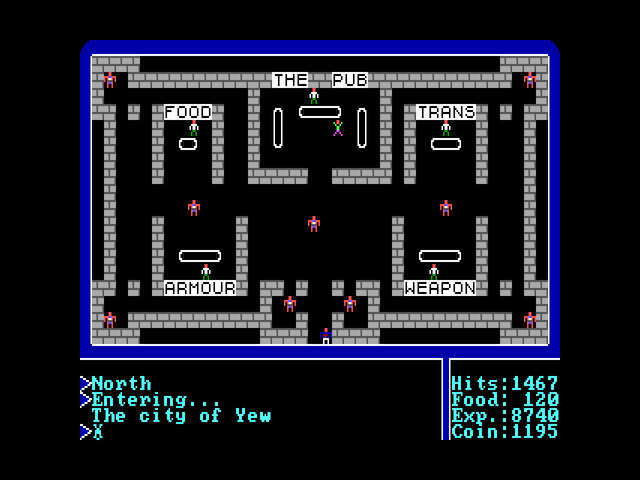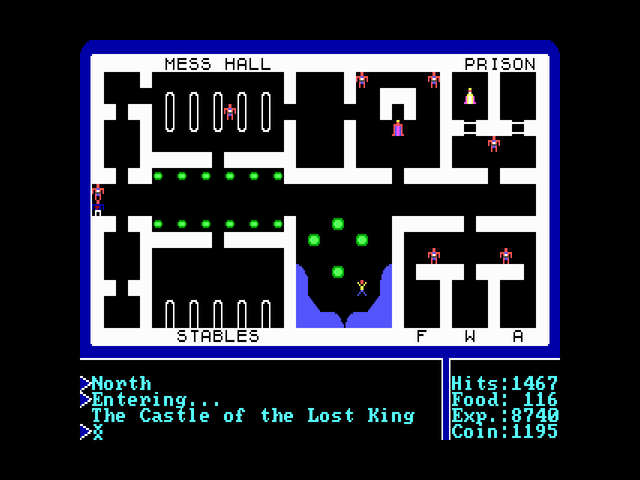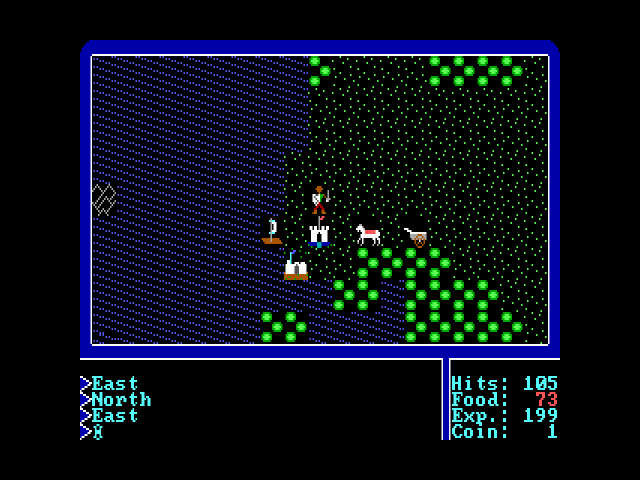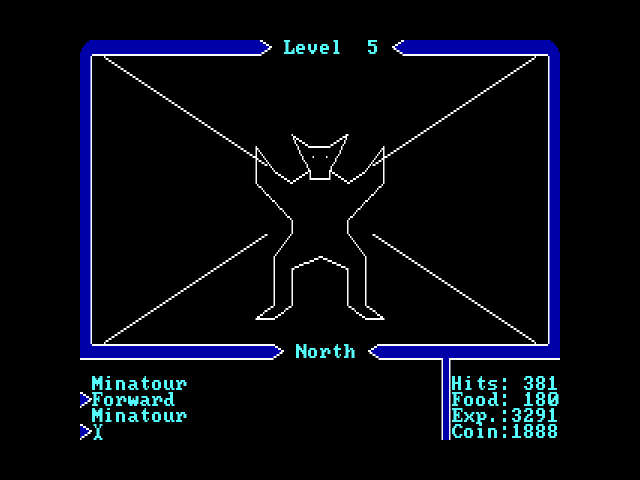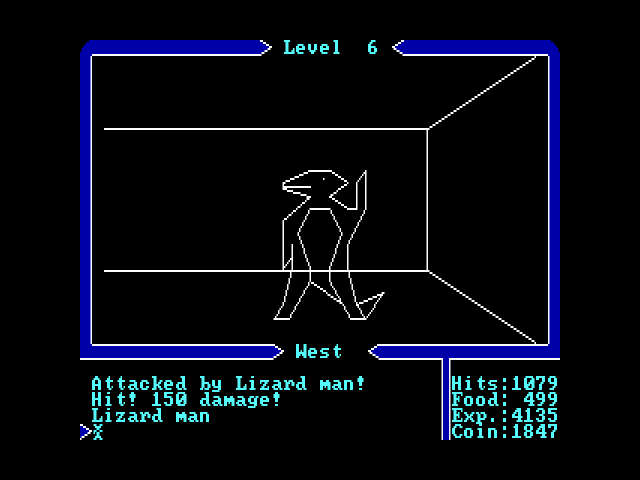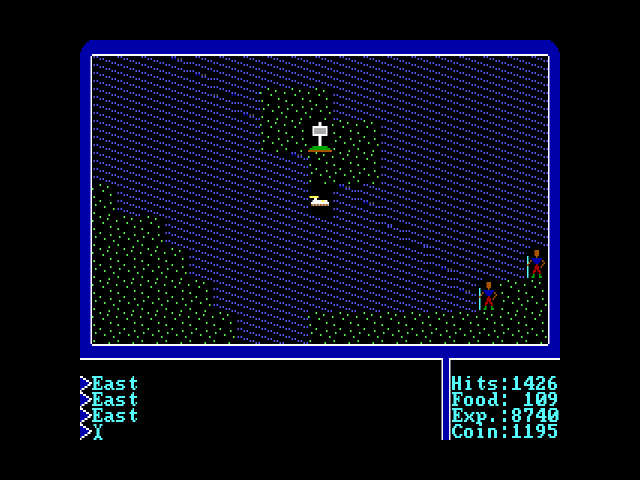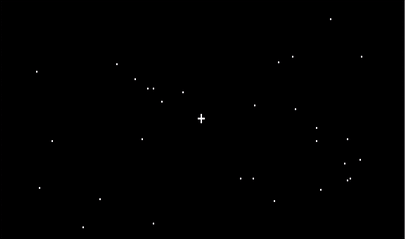Ultima 1: The First Age of Darkness is the first title of the Ultima series. It was developed by Richard Garriott and Kenneth W. Arnold while both attended the University of Texas. It was released in 1981 for the Apple II, soon receiving ports to other machines of the time, like Atari 8-bit computers, Commodore 64, DOS, and some japanese machines, like the FM Towns. In 1986 the game was recoded and released with a few improvements, like more city and castle maps and the addition of wandering monsters. This is the version sold by GOG and the one I played.
This celebrated series consists of nine main titles, an online MMORPG (cleverly named Ultima Online) and a few spinoffs. Since Ultima 9’s poor reception in 1999, the series has been mostly forgotten by its owner, Electronic Arts. Interestingly, Ultima Online continues to be supported more than twenty years after its initial release, with official servers still running.
The Narrative
Your adventure takes place in Sosaria, a land comprised of four continents, eight castles, 32 cities and 36 random generated dungeons. The world may look like another medieval fantasy setting, but it has some Sci-Fi elements thrown in. There are futuristic weapons and vehicles, space exploration, tie-fighters, hyperspace jumping and time travel.
The game uses terms from older forms of English, like thy, thou and thee, and sometimes a “literary” style of writing. The manual does this as well and can make you chuckle a bit.
The epic plot of Ultima 1 depicts the confront between the hero and the evil wizard Mondain. Sosaria is under his reign of fear, with monsters wandering through the continents and the common NPCs living in despair. The wizard cannot die thanks to a mystical gem that grants him immortality, and is your mission to find a way to kill him.
It’s not an incredibly deep and complex story but it’s serviceable, like most narratives from the time.
Presentation
Ultima was very innovative for its time, having an overworld with castles, cities and dungeons that can be freely explored. While on the overworld the game uses a top-down perspective, but goes full first-person view inside dungeons. It’s a nice mix that was later used in other titles, like the Phantasy Star series, from Sega.
Still, it is more than 40 years old already. Logically it looks like a relic from a forgotten past. But to be fair, it was on the forefront of innovation, as it was one of the first commercial games to employ title based graphics.
There are no music nor sound effects besides some speaker noises, so prepare your own soundtrack or podcast.
Mechanics
Ultima can be a short game if you know what to do or play with a guide, as it doesn’t offer too much in relation to plot or gameplay. But it can be very rewarding if you explore the world without any help. There are some funny interactions with NPCs, a few secrets to uncover and, if you don’t compare it to modern titles, a big world full of cities to visit, dungeons to raid, princess to rescue, kings to steal from and monsters to kill. You can see that there was a lot detail and love put into this game, and I must commend its developers for their work.
Crafting your Character
At the beginning you must create a character. First distribute some points between five attributes: wisdom, intelligence, strength, agility, charisma. Then choose a race: human, elf, dwarf or bobbit (yes, bobbit). Finally, pick a colorful name; a gender to roleplay and a profession.
I named my bobbit thief Hundra, as a homage to the 1983 Italian-American-Spanish classic movie. After finishing your character, you can finally see Sosaria in its full glory.
Starting the Adventure
As the game begins, you will find your character in huge map without any clue on what to do now. You can freely explore the region, but you can’t travel too far thanks to the monsters and other geographical barriers.
From your starting point, there is a city and a castle nearby. If you go to the castle, you will meet its king, Lord British, ruler of Britannia. He is the alter ego of the game’s creator, Richard Garriott, who appears in mostly, if not all Ultima titles in this persona.
Castles are very interesting in Ultima. You can “transact” with the king to exchange money for health or to receive quests that will send you to a sign-post somewhere in the world or to a dungeon to kill a monster. You can free a princess for some loot, drop stuff in a pond, or mass murder everyone (specially the jester). You can also steal armors, weapons and food.
I was surprised when I discovered the game has a steal mechanic as it seems rather advanced for the time. Even if it’s very limited, as you can’t steal from people, only from specific places like stores and the king’s storage, it makes Ultima more distinguishable from its competitors.
Take care to not be detected, though; otherwise the guards will mercilessly attack until you flee the castle or kill them all.
The primary function of every city is to sell whatever your character needs on their adventure. Weapons, armor, food, spells, or a vehicle. Just don’t buy a horse, a cart, or a raft.
You can also go to a pub and order a few drinks. Sometimes the bartander will tell you a rumor. Some are useful for finishing the game, others are useless, but don’t drink too much, or you will be “seduced” and lose half your money (we can agree that didn’t age well).
When you leave the city your character will feel an insurmountable desire to eat and will start to consume all their food. It won’t happen while visiting cities or castles, only on the overworld and dungeons. If all the food is eaten, your character will die of instant starvation. But that won’t happen often, as you can buy food before leaving most cities or steal it from castles. In my opinion, this is a useless mechanic and only exists to force you to spend money.
Magic
Differently from most RPGs, magic in Ultima functions as a consumable item. In other words, it’s not possible to learn magic, you must buy a spell as many times as you wish to cast it. You also need to buy them one by one, turning them into a huge hassle. Funnily enough there is a lore explanation to this limitation.
In a time before the game started, magic was banned from Sosaria, resulting in the loss of its knowledge. At the present magic is being relearned, but there is no mage capable of memorizing it, so it’s necessary to buy them in bulks from special stores. I conclude the developers knew this was a problem and tried to transform it into a feature.
My biggest question is: who produces these spells for wholesale? Does this person needs to buy other spells to create new ones? Is it a conglomerate or just a bunch of local producers? We may never discover, but I prefer to think there is a mega corporation on Sosaria mass-producing spells for stores and making a huge profit, all while the world is ending.
Probably this is the same reason that all classes have access to most spells, except for a few that are exclusive to wizards.
Dungeons, Combat and Character Progression
Ultima’s main quest revolves around obtaining four gems and a time machine to travel to the past and destroy Mondain, before he becomes immortal. To acquire the gems, you must go to a king and offer your services. He then will request that you kill a specific monster found only inside dungeons. Upon completing your assignment, he will reward you with a gem. Do it four times and you can start looking for a time machine.
When you descend into a dungeon the game assumes uses a first-person view with monochromatic vectors, without any kind of texture. There you just fight, get coins and experience, open chests and coffins (yeah, coffins), eat to satisfy your craving for sustenance and search for stairs to reach the next level. There is no special treasures, secrets or encounters, so don’t lose your time looking for it.
Since all dungeons have the same monsters and no special items to find, there is no incentive to explore them all, just pick one and complete all the necessary quests. You don’t also need to know their layout since you can buy some Ladder Up and Ladder Down spells. These spells create ladders for you to descend to the deeper levels and to go up until you reach the overworld, so don’t lose your time mapping these monster-infested places.
When an enemy appears every time you do an action, it will attack or try to get closer, similar to most turn-based games. Besides running away, you can only attack, preferably with a ranged weapon or a spell to kill enemies before they reach you. If you die the game will start a resurrection process, but you will lose some items, coin and HP if it is successful.
In most RPGs you fight to gain more levels, increase attributes and find better items in order to explore new places and advance the story. yet in Ultima things don’t work exactly like that. Your character still gains levels by killing enemies, but that will only affect how many monsters appear on the overworld and the goods available in shops. It’s also necessary to be above a certain level to operate the time machine and finish the game.
Besides completing the king’s quests and acquiring gold, you must kill monsters in order to increase your HP. It’s also possible to obtain HP by offering money to a king. That’s why gold is the most important resource in the game, as it is used to keep your character alive (by buying food and HP), and to increase their strength (by buying equipment and spells).
I never grinded for HP before, but this title gave me this experience. It’s incredibly annoying to enter a dungeon only to increase your HP but end with less than you had initially. Imagine it happening two or three times. As I said before, HP can also be “bought” from kings, but since money is necessary, you still need to battle monsters to increase it.
Naturally, you can always exploit the system by staying in the first two or three levels of a dungeon, where enemies give less damage and die from fewer attacks, making it easier to hoard money and HP.
So, how do you increase your character’s attributes? By going to sign-posts.
Except for strength, all attributes are increased by visiting a sign-post and interacting with it. You can’t use them two times in a roll, so prepare to go back and forth. It isn’t hard, just annoying. But to increase strength you must complete a quest for a king. Like with the sign-posts, you can repeatedly complete quests until you fully increase every stat.
Space, the Final Annoyance
After acquiring the four gems, it’s time to find the time machine. Any princess can say where you can find one, but they will only tell it to a level 8 character that is also an ace pilot, since princesses have standards. In order to become one, buy a space shuttle from the transport store and go to space. This is when my experience with Ultima 1 turned sour.
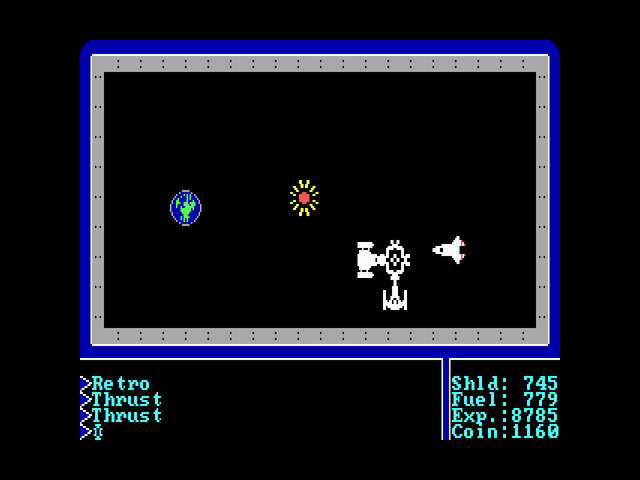
The game becomes a spaceship simulator, where you must travel between different sectors and destroy 20 enemy tie-fighters (yes, from Star Wars). Spaceships have two attributes: shield (its life) and fuel, necessary for every action you take, be it moving, shooting or aiming. If you’re out of it, you will get stuck and will spend the rest of your days drifting among the stars. To recover damaged shields and fuel, you must dock in space stations (first pay the 500 coins fee), what needs pixel-perfect precision, otherwise your vessel will bounce back and take damage.
The space shooter segment is horrendous and tedious. It takes forever to move the marker to an enemy, and you also need pixel-perfect shots to destroy them. To find more foes, move from one space sector to another by performing a hyperspace jump. It’s annoying since it’s too long, but I like its animation, it cracks me up.
After becoming an ace pilot, you can return to earth and go back to the normal gameplay loop to finish the game.
Final Thoughts
This is the second time I played Ultima and my opinion of it got better. I still dislike some of its design, like how HP and character progress work, but I must say I understand why it was a success at the time of its release. The game focuses in offering a somewhat open-worldesque experience on the charming world of Sosaria, where you can explore it, go on simple adventures or save the world finishing the main quest.
In the end, Ultima 1 is a game almost 40 years old and don’t have much to offer in terms of writing or gameplay for today standards. Besides curiosity or nostalgia, it’s better to try other games, retro or not. In a time when most games have unnecessary remakes or remasters, it’s puzzling that Ultima lacks one.
Final opinion: Not recommended, but worth a shot if you’re curious about the series beginnings. If you’re into DOSBox ports for phones, it may also be a good alternative to pass your time.

